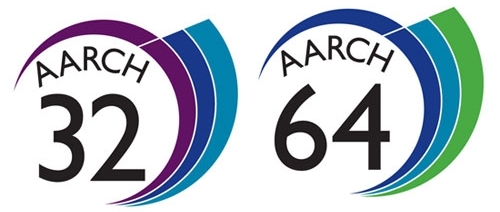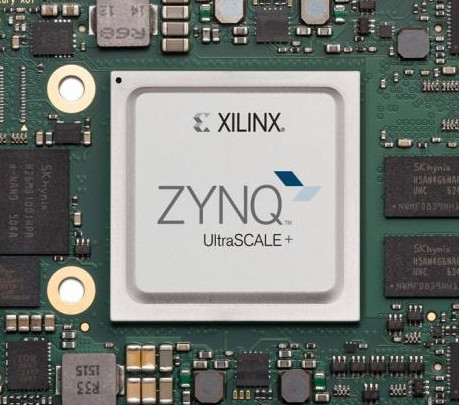Virtual Open Systems Newsletter
In this edition, Virtual Open Systems highlights some of its most recent development activities related to its mixed-criticality virtualization product software stack to strengthen its product offer for automotive, IoT connected objects, industry-4.0. In addition, the most recent news about the company dissemination and event demonstrations are described, as well as its latest research and innovation projects news and the leading activity in the AGL Automotive Grade Linux EG-Virt virtualization working group.
- Product extension: VOSYSmonitor port on ARMv7 architecture
- Product release: VOSySmcs, Automotive mixed-critical software stack
- Component release: VOSYSVirtualNet virtualization component
- Product extension: VOSYSmonitor on Xilinx MPSoC UltraScale+
- Checkpointing for HPC: High performance live checkpointing
- Automotive virtualization: AGL EG-VIRT white paper
- Leading Innovation: VOSYSIoT to enable mixed-critical IoT Edge
Enabling mixed-criticality in Automotive, IoT edge node, Industry-4.0

Virtual Open Systems extends its VOSYSmonitor product offer support to new platforms. ARMv7-A architecture support has been added with the VOSYSmonitor port to the Renesas RZ/N1D SoC (Dual Cortex-A7). VOSYSmonitor can be easily used on ARMv7/ARMv8 platforms with ARM TrustZone extension. VOSYSmonitor allows the co-execution of Real-Time Operating System (RTOS) in the Secure world along with a General Purpose Operating System (GPOS) in the Normal world; multi-cores support is available by leveraging the Power State Coordination Interface (PSCI) convention. VOSYSmonitor implements the Floating Point Unit (FPU) lazy context switch feature, which enables the usage of floating-points applications by both worlds, while optimizing the context switch latency.

In the connected electric/hybrid vehicles era, the automotive industry is facing a revolution, accelerated by Autonomous Driving and Artificial Intelligence (AI), where car-makers push for Electronic Control Unit (ECU) consolidation with mixed-criticality requirements. In this disruptive context, Virtual Open Systems proposes the most innovative, scalable and open software stack solution (VOSySmcs), that offers Tier-1 vendors a modular, high performance solution. VOSySmcs innovation resides into open source components integrated upon a slim proprietary certified virtualization layer (VOSYSmonitor). VOSySmcs opens to a completely new generation of software driven vehicles, where autonomous driving with virtualized access to AI hardware acceleration mechanism can be orchestrated and executed in isolated virtual machines, with stringent ISO-26262 certification requirements. One short-term application of VOSySmcs software stack concerns the consolidation of the In-Vehicle Infotainment (IVI) system along with the Digital Instrument Cluster on a common hardware platform. Such an implementation raises several technical and certification challenges (e.g., I/O resources sharing, Digital Instrument Cluster ISO 26262 certification, etc) that VOSySmcs aims to overcome.

The modular, slim and certified virtualization layer VOSYSmonitor enables the integration of multiple subsystems with different levels of criticality on a common multi-core heterogeneous platform. In order to provide a communication channel between these subsystems, the latest component extension to VOSYSmonitor, VOSYSVirtualNet, implements a fully Internet Protocol (IP) compatible network module, enabling interoperability and efficient low-latency inter-world communication between software components. VOSYSVirtualNet is built on existing primitives and provides full flexibility. System integrators can choose from the full spectrum of networking APIs and tools, to develop applications, utilize the link and customize it to their needs. Moreover, VOSYSVirtualNet is resilient against a wide range of cyber-security attacks and provides sophisticated countermeasures against common threat scenarios (e.g., DoS attacks, etc.).

Virtual Open Systems extends its mixed-criticality virtualization solution support based on VOSYSmonitor onto the Xilinx's MPSoC Zynq UltraScale+, opening to several interesting use cases. Among others, it can be exploited in edge/fog computing systems, where the edge node can be enhanced with real-time and safety critical aware data collection and, simultaneously, with data pre-processing via embedded virtualized FPGA accelerators. Virtual Open Systems support the latter with its VIRTmanager, a software and hardware solution able to dynamically expose FPGA accelerators to VMs, which will lead to the convergence of mixed-critical virtualization and FPGA accelerators virtualization into the same platform; these technologies find their applications in IoT edge computing and ECU consolidation in automotive.

At the 2018 HiPEAC ExascaleHPC workshop organized in the context of the ExaNoDe EC project, Virtual Open Systems has presented the progress of its implementation of live and incremental checkpointing, for Qemu-KVM. The live aspect of this work reduce the virtual machine (VM) downtime to a few milliseconds, while the RAM is copied to disk in background; and the incremental aspect allows to checkpoint only the pages actually modified since the previous checkpoint. Periodic virtual machine checkpointing improves the reliability of HPC and cloud-computing environments, as it prevents the loss of volatile data in case of hardware failure. The live aspect makes it virtually transparent for the user, whose VM keeps running unaltered during the checkpointing. The incremental aspect further reduces the checkpoint impact on the system, as only part of the RAM is saved, and also reduces the footprint of the checkpoints on the disk. The challenges behind both aspects of the checkpointing are related to the tracking and handling of the memory pages being modified by the guest system. Virtual Open Systems developed a novel approach to track these changes in Qemu, which guarantees the consistency of every checkpoint, regardless the activity of the guest system.

Virtual Open Systems leads the worldwide open source efforts to bring virtualization in automotive through the AGL Virtualization Expert Group (EG-VIRT). EG-VIRT mission is to provide the AGL virtualized software defined vehicle architecture; a first contribution is a community white paper which aims at federating the open community vision for virtualization. Its presents the benefits of virtualization in the automotive market and related use cases, the requirements and solutions to implement it in production cars. Moreover, the important topic of open source projects ISO26262 certification is also discussed.

In modern Internet of Things (IoT) systems, sensitive and critical data are collected and processed along with non-critical one and need to be treated in low power and low cost edge platforms. To enable it, Virtual Open Systems proposes an innovative end to end IoT software stack solution, VOSYSIoT, which allows to execute applications with different levels of criticality upon a same hardware platform. This solution is based on its software product component, VOSYSmonitor, which handles the mixed-criticality requirements of the entire system by isolating real-time, security or safety related applications into a hardware-separated software partition. Virtual Open Systems showcases VOSYIoT at the SIdO-2018 event in Lyon; a mixed-criticality IoT node will be showcased with two sensors connected on a single edge platform, one safety critical heartrate-sensor and a non-critical sensor gathering environment metrics. The collected data are processed and sent to the cloud in order to be displayed by means of an IoT web platform.
- Newsletter 2013 09
- Newsletter 2014 03
- Newsletter 2014 09
- Newsletter 2015 03
- Newsletter 2016 03
- Newsletter 2015 09
- Newsletter 2017 09
- Newsletter 2016 09
- Newsletter 2017 03
- Newsletter 2020 09
- Newsletter 2018 09
- Newsletter 2019 03
- Newsletter 2019 09
- Newsletter 2020 03
- Newsletter 2020 09 jp 日本語
- Newsletter 2022 09
- Newsletter 2021 03
- Newsletter 2023 12
- Newsletter 2021 03 jp 日本語
- Newsletter 2021 09
- Newsletter 2021 09 jp 日本語
- Newsletter 2022 03
- Newsletter 2024 06
- Newsletter 2022 09 jp 日本語

 VOSySofficial
VOSySofficial




